NYC's Long-Awaited Davis Center Opens in Central Park
A stunning new facility at Harlem Meer opens to the public this weekend!


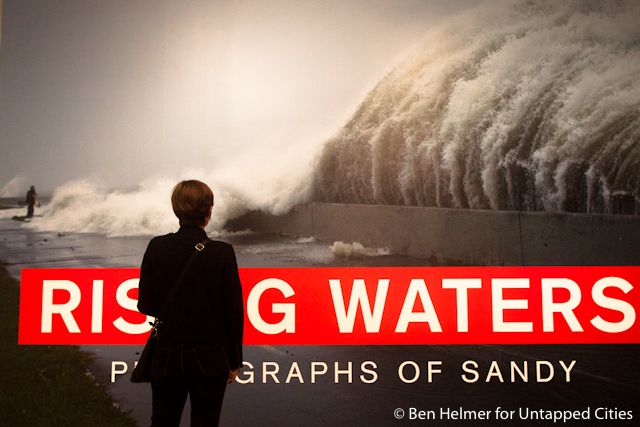
“On Thursday we heard about this storm that might be brewing, but thought nothing of it. By Friday morning, we knew it was serious.” Daniel Avila, a photographer at the NYC Parks Department, took one of the 200 photos featured in The Museum of the City of New York’s exhibit, “Rising Waters: Photographs of Sandy.”
One year ago, New Yorkers awoke to a grave reality: we were not only included in hurricane season, but highly vulnerable to it. Sandy may not have devastated you directly, but we all knew someone, and certainly were all impacted. In the age of Instagram, Rising Waters brings together the stories of both pro and amateur photographers, experienced through photos.
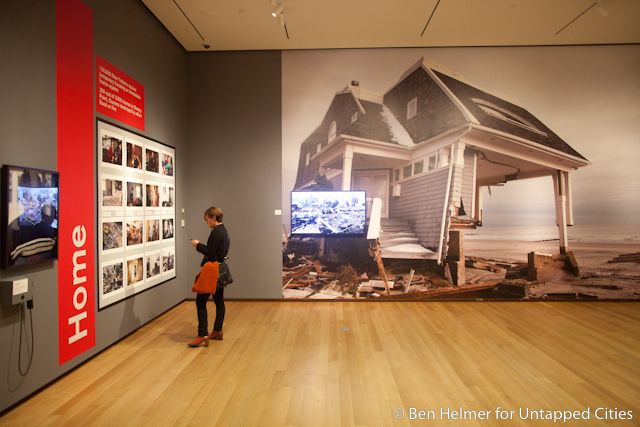
Christina Whiting, a native of Homer, Alaska, arrived in Brooklyn on Sept 15th, 2012. Her original plan was for a three month stay. Then Sandy hit. A portrait photographer, her sense told her: “Put down the camera and help.” She found herself amongst 50 Red Cross volunteers, waiting hours for their marching orders. “We were supposed to go door-to-door, asking people what they needed.” After hours without helping people, in a moment of frustration, Christina went for a walk. “I saw an old man straightening fallen down trees, and asked if I could help. He agreed, and we spent an hour righting downed trees. We hardly said a word to one another.” As they finished, before parting ways, he gave her a kiss on the cheek.
It was then that she felt at home in New York. “I called up my boyfriend and said I wanted to stay longer.” Three months became a year. Christina finally returns to her hometown in Alaska next week.
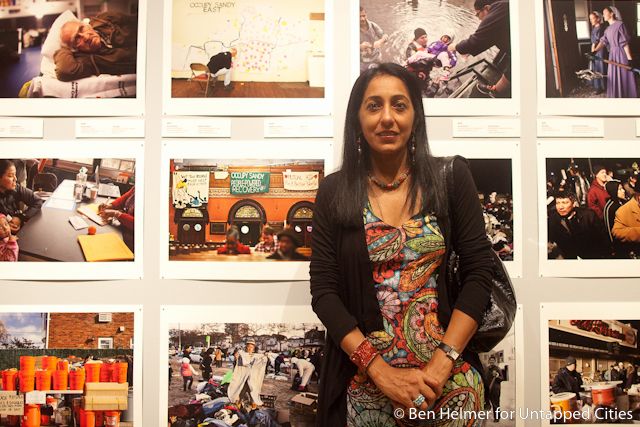
Journalist Ramaa Reddy Raghavan
Ramaa Reddy Raghavan, a freelance journalist, and recent graduate of The Columbia School of Journalism, discovered the charity of members from the Indian Sikh Community called United Sikhs. “They were reaching out and feeding 1000 people per day.” The community had already been serving places from Manhattan to New Jersey, so she pitched the story, and followed them as they made their way to the Rockaways. United Sikhs were one of the first to come to that part of the Rockaways. Her report would later air on PRI’s The World.
United Sikhs were working with New York Cares to identify and distribute up to 1500 hot meals per day to areas where few had the the means. “The people had food, but no way to cook it.” The seaming lentils, rice and vegetables were some of the first hot food seen in that area of the Far Rockaways. This is where Ramaa was when she took the photo featured in “Rising Waters.”
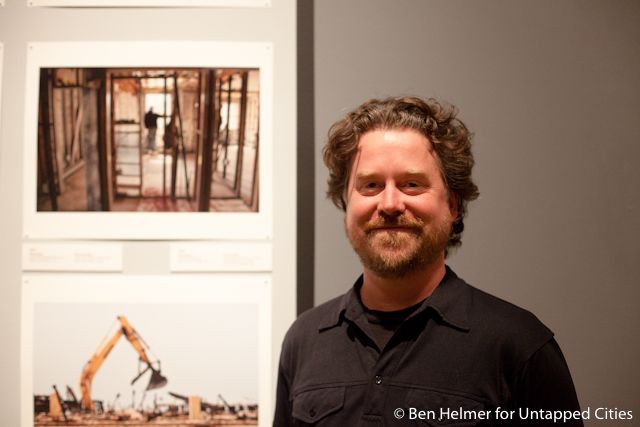
Nathan Kensinger
Even for those with access to a car, gas shortages made travel difficult. If transit was even running, it was an almost daily shifting map of only a few subway lines. Instead of sitting stranded, Sunset Park resident Nathan Kensinger spent a lot of his time biking the affected areas after Sandy hit. With a passion for the coast, he had already been documenting many of the hard hit areas for several years before Sandy’s appearance.
Two days after the storm, Nathan took the still-active ferry, and headed to Staten Island. From there, “I just biked as far as I could down the coast.” Too far from home, he hitched a ride back with a friend transporting supplies. “Gas was hard to come by then. We ran out of gas half way across the Verrazano Bridge, and coasted the rest of the way down.”
It was on one of his many trips to Staten Island that he found the scene of his photo from “Rising Tides,” which he would continue to revisit, even as recently as last week. “I was photographing this pile of rubble next to this guy’s house. He was curious what I was doing, and invited me in.” His photo, taken in April, featured the gutted second floor of a house. “They’ve made some progress since then, but [as of last week] they still haven’t moved back in.”
The rubble of the house next store also hasn’t moved.
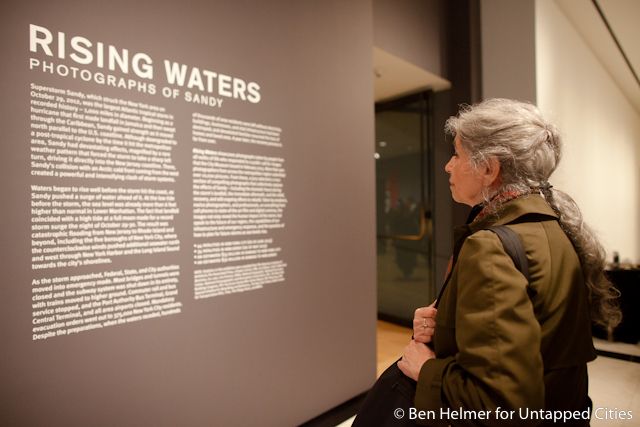
Manhattan wasn’t free of Sandy’s impact, either. For SoHo resident Elisa Deljanin, it was a story of blackout. “We stayed inside for the first few days, and almost always at night.” There were rumors of people dressing as Con-Edison workers, and trying to break into people’s houses. Playing it safe, Elisa and her husband spent the first 24 hours inside, listening to NPR on a hand radio. “We didn’t think it would last more than 24 hours, and ventured to 34th Street the next day for sandwiches.” Elisa didn’t stay out at past dark, disturbed by the screams of people at night. “Not screams of terror, but just because they could. It was unsettling.”
Finally, on Thursday night, they ventured out at night, staying within a 4-block radius. It was at Lupe’s that they found her shot, featured in The Museum of The City of New York’s exhibit. The next day, as they returned to their local bar at 14th street, someone ran down the street, yelling. “The power is back. It’s time to party!”
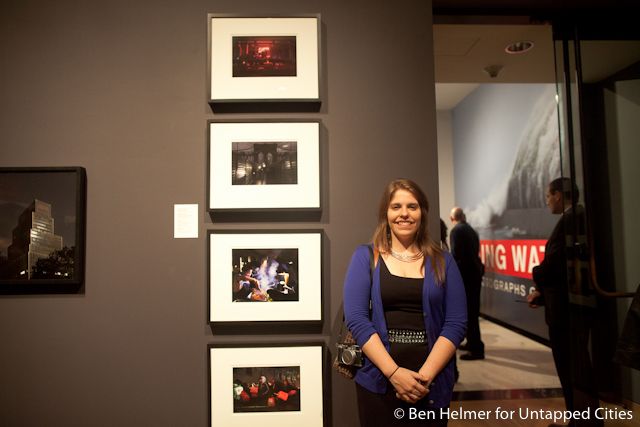
Most of the people who spoke to Untapped Cities at the opening night of “Rising Waters” had no impact to their home or immediate neighborhood, yet none escaped the effects. It is much the same for many of us New Yorkers. This show is a reminder of not only how lucky many of us were, but also how unlucky many continue to be.
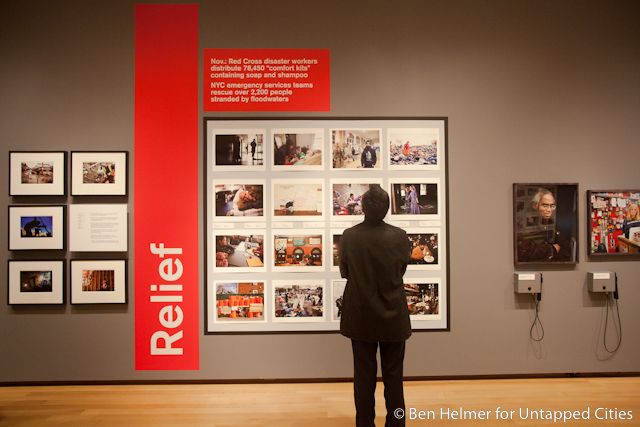
“Photography is an important tool for understanding our recent history.” Sarah M. Henry is Chief Curator for the Museum. “[It] is the medium of the moment.” Sarah helped refine the entries from more than 1000 photographers into the exhibit of just 200 images. She told Untapped Cities her impression of the coverage of Sandy continues to change. “First it was the TV, [and images in the papers]. Now it’s these images… In 50 to 100 years, these photos will have a different meaning.”
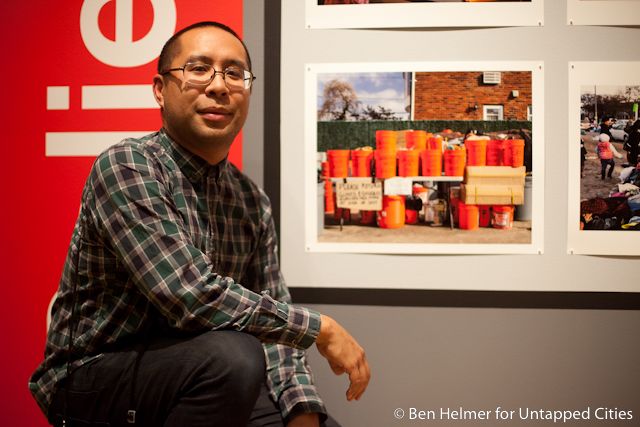
C. Bay Milin
Other New Yorkers were doing what they do best–figuring out ways to help outside the system. C. Bay Milin’s photo was taken while he worked with NY Cares, witnessing Team Rubicon training members of NY Cares to muck out houses. Many insurance companies refused coverage to any citizen who mucked out their own houses. Rubicon worked with volunteers and the insurance companies to muck out houses for those affected without losing claim to their insurance.
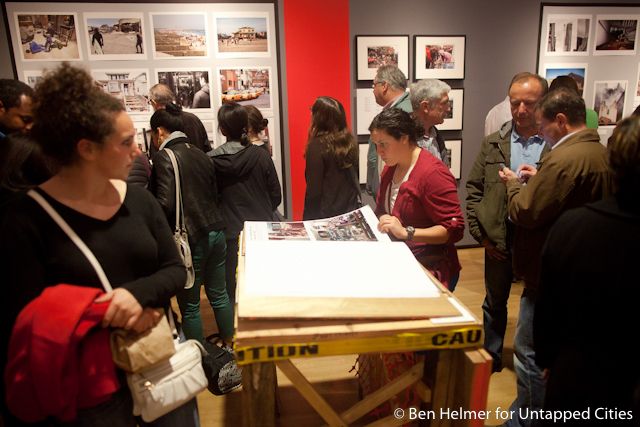
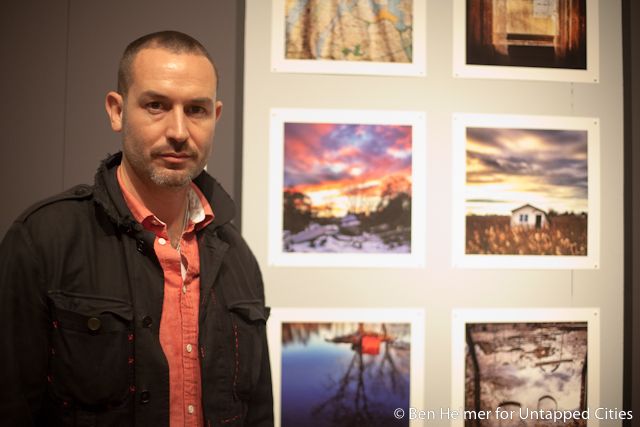
Wyatt Gallery used his bike, iPhone and 10,000 Instagram followers to rally people, and get help to victims of Sandy. When he came across people whom needed help, his phone went in his pocket, and he was unencumbered from helping. He is currently working on the launch of his book, #Sandy. All of the proceeds from the iPhone Photography book go to Sandy Relief.
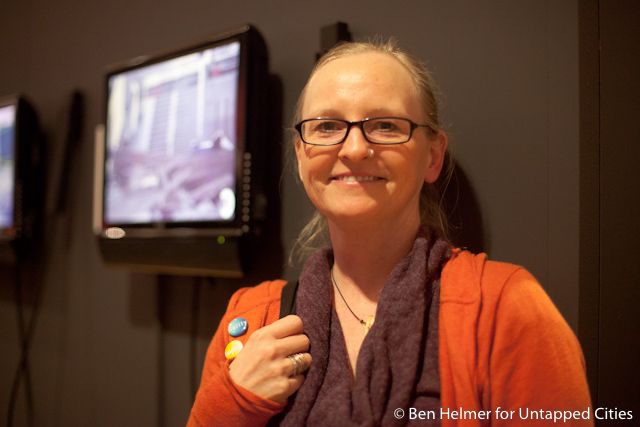
Christina Whiting worked with NY Help Portraits, 25 photographers, and several makeup artists provide free, professional portraits to those affected by Sandy, many of whom had lost all of their family pictures. The Christmas-time events also included a visit with Santa, toys for the kids and a hot meal.
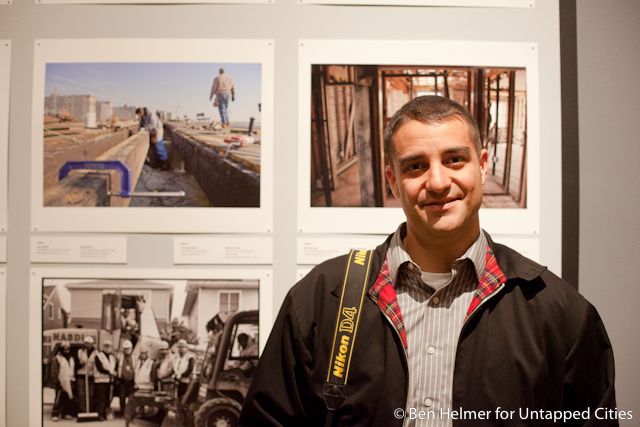
Daniel Avila, of the New York City Parks Department, told us that they continue to rebuild after Sandy, and had to reassemble the Rockaway Boardwalks in “stations,” near 86th Street, 96th Street, etc., so that people in each area would have some access. Otherwise, many areas would go unserved as they continue to repair the still extensive damage brought by Hurricane Sandy. Daniel poses next to his entry in “Rising Waters.” (top left)
“Rising Waters: Photographs of Sandy” runs through March 2nd, at The Museum of the City of New York, on Manhattan’s Upper East Side.
Subscribe to our newsletter